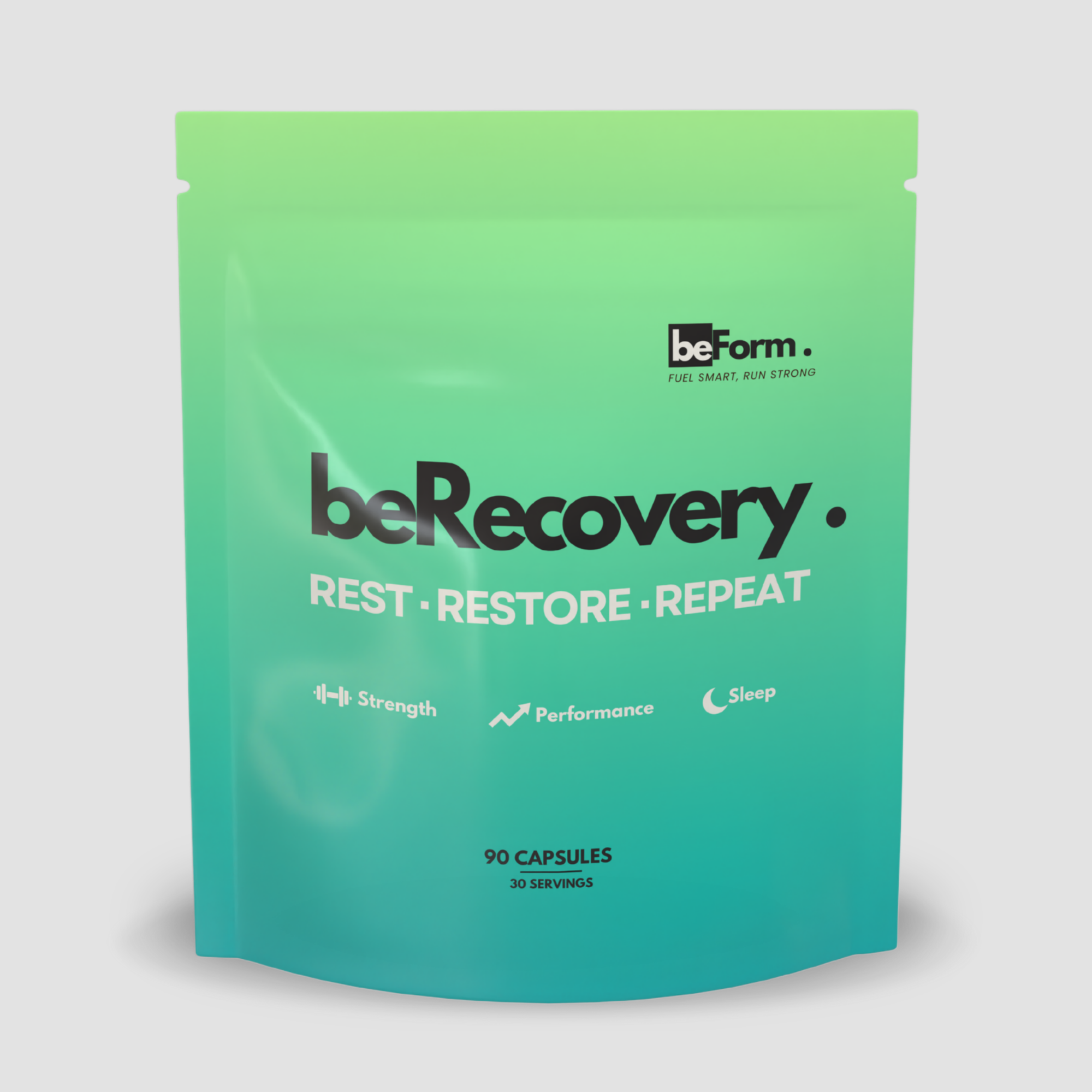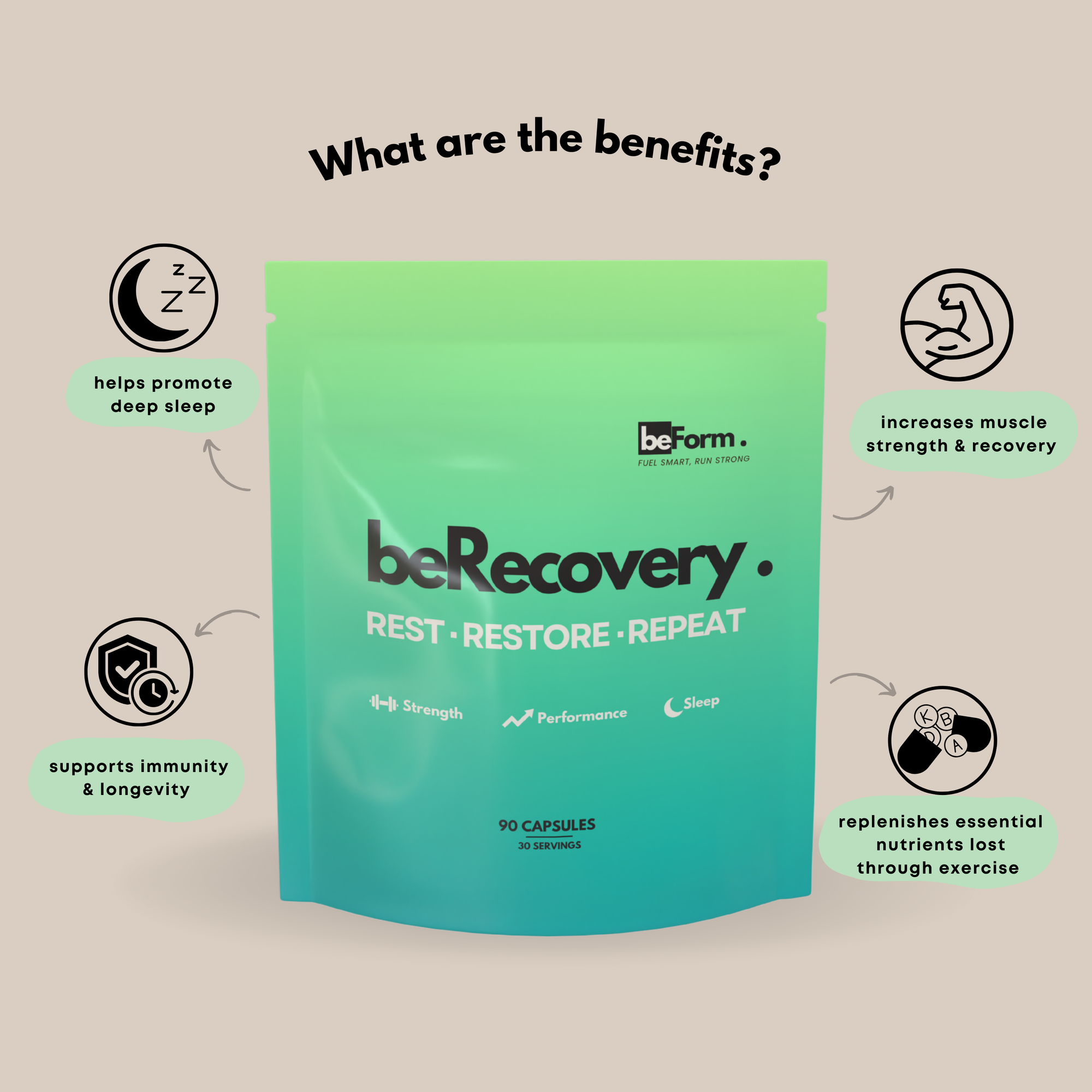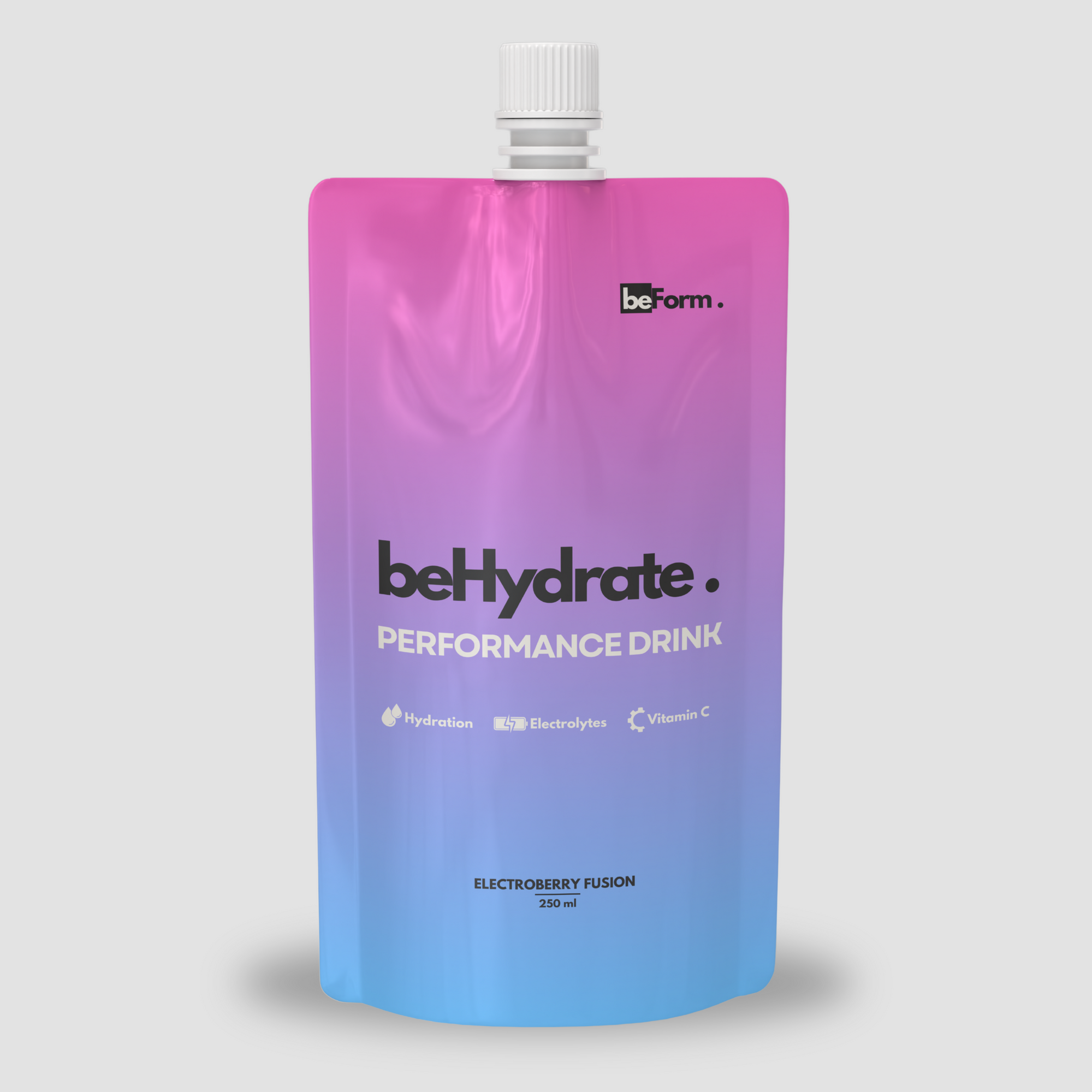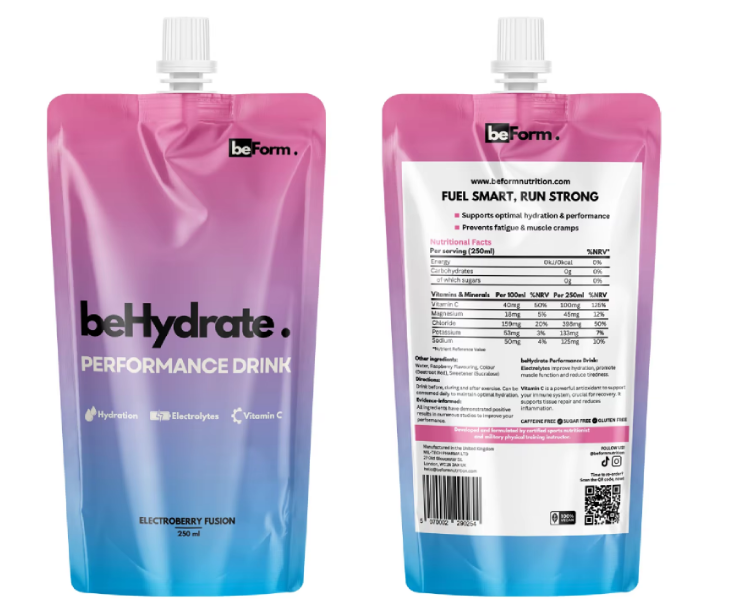Introduction to the Big Five Barbell Workout
The Big 5 Barbell Workout is an intensive strength training program designed to enhance overall physical fitness through compound movements.
This approach strategically targets multiple muscle groups at once, making it especially beneficial for runners requiring strength and endurance training.
This workout consists of five key exercises -
-
Barbell squat
-
Deadlift
-
Bench press
-
Bent-over row
-
Overhead press
All are essential in developing strength, power and stability in athletes of any kind.
The Big 5 Barbell Workout's philosophy rests upon an understanding that functional strength results from engaging multiple muscle groups simultaneously.
Compound movements promote balanced muscular development while strengthening core strength and joint stability, and are therefore beneficial not only for building muscle but also improving athletic performance, particularly among runners who must maintain lower-body strength while remaining agile and fast.
This method is ideal not only for building mass but also improving athletic performance, as runners require supporting lower-body strength while remaining agile and speedy.
The workout structure for The Big 5 involves performing each of its five exercises for multiple sets and repetitions, increasing weight with increasing strength as strength improves.
This progressive overload principle ensures continued muscle growth and adaptation.
Furthermore, the Big 5 can easily be tailored to various fitness levels, making it accessible to both beginners and experienced lifters.
As opposed to conventional running training programs, which focus heavily on endurance or cardio for runners, the Big 5 Barbell Workout takes a more comprehensive approach.
By including strength training in an athlete's regimen, this workout helps address common weaknesses while simultaneously improving running performance and decreasing injury risks.
As such, this workout not only serves as another fitness element but as an essential part of an integrated running training plan.
How the Big 5 Barbell Workout Works
The Big 5 Barbell Workout is an intensive strength training regimen centred around five essential barbell exercises: the squat, deadlift, bench press, overhead press and barbell row.
Each move works multiple muscle groups simultaneously for an all-encompassing workout designed to boost overall body strength, stability and endurance.
By targeting these key moves, runners can significantly enhance their running performance and reduce injury risks related to repetitive running motions.
Squats
Squats focus mainly on strengthening the lower body, engaging quadriceps, hamstrings and glutes while activating core stability.
Squats are especially essential for runners as strong legs provide essential power when sprinting or maintaining pace over longer distances. Furthermore, squats promote hip mobility and strengthen muscles that support proper running form.
Deadlifts
Deadlifting, an exercise renowned for activating the entire posterior chain - back, hamstrings and gluteal muscles - is another essential exercise for runners as it strengthens the hips and lower back muscles essential to efficient running mechanics.
Furthermore, grip strength development is often overlooked in running performance but is essential in maintaining form across varied terrain.
Bench Press
Bench pressing, specifically targeting the upper body (including chest and triceps), is integral for creating overall body balance. A strong upper body contributes to improved running posture and arm movement that can increase running efficiency.
Overhead Press
Overhead press further amplifies upper body strength while engaging core stability during running, providing enhanced stability during runs.
Barbell Row
Last but not least, the barbell row focuses on strengthening upper back muscles for proper posture during longer runs.
Overall, the Big 5 Barbell Workout promotes muscular coordination and strength training that will aid runners' endurance while decreasing fatigue levels during running, making this workout an invaluable asset to improve athletic performance.
Incorporating this workout can make a real difference for serious runners looking to maximise athletic performance.
Benefits of the Big 5 Barbell Workout for Runners
One of the key advantages of the Big 5 Barbell Workout is building functional strength. Runners tend to prioritise cardio training while neglecting muscular strength training, leading to inefficiencies and injuries.
Economy
By engaging in barbell exercises to develop functional strength, runners can create more powerful strides while improving running economy; increased force production leads to greater propulsion forward with increased efficiency and speed.
Endurance
Strength training using the Big 5 can significantly boost muscular endurance, giving runners greater ability to sustain a high pace for longer distances, which in turn improves race performance.
Stamina
By including barbell workouts in their training regimen, runners may witness a noticeable boost in stamina that allows them to tackle longer runs or maintain speed during challenging races.
Injury Prevention
The Big 5 Barbell Workout can also serve as an injury prevention strategy, helping runners avoid common running injuries such as shin splints and knee pain by increasing balance in muscle development.
This is particularly true among the underused posterior chain muscles, while strengthening supportive ligaments to stabilise joints during repetitive motion running.
Integrating this workout into your training program provides a comprehensive strategy to enhance performance while safeguarding against potential harm to your health.
Optimal Sets and Reps for Runners
To achieve maximum benefits from these workouts, knowing the optimal sets and repetitions is critical for optimising results based on individual experience level, workout intensity level, and specific performance goals.
Beginners
I would advise those new to resistance training to begin with lighter weights in order to master fundamental movements.
Engaging in 2 to 3 sets of 8-12 repetitions helps build strength while encouraging proper form, leading to muscular growth that boosts endurance and power during running.
Allowing adequate rest between sets (60 to 90 seconds) provides optimal recovery of muscles for subsequent sets.
Intermediates
Intermediate runners, having established a solid base, may aim for 3 to 4 sets of 6 to 10 repetitions of more intense exercises that gradually increase load over time.
This approach increases strength gradually while building the endurance necessary to tackle higher mileage or speed work.
By including compound lifts like squats or deadlifts as part of their program, primary muscle groups used during running can be strengthened for greater overall efficiency.
Advanced
Advanced runners looking to reach peak performance should aim for 4 to 5 sets of 4 to 6 repetitions with heavier weights, using this lower rep range for each set.
This type of training enhances maximal strength, which is essential to optimising speed and power output during races. At this intensity level, it is vitally important that form is maintained to avoid injury.
Customised strength training for individual goals, along with regular adjustments in sets and repetitions, can significantly boost running performance.
Making these necessary modifications allows runners to adapt their strength training effectively, reaching their highest potential.
Preparing for the Big 5 Barbell Workout.
Preparing for the Big 5 Barbell Workout requires taking an integrated approach that considers warm-up, cooldown, nutrition and overall body conditioning.
Beginning a barbell training program can be a transformative experience for runners looking to boost performance and overall physical strength.
Warm Up
It is therefore vital that a proper warm-up be performed before beginning any barbell exercise routine. A proper warm-up not only increases blood flow to muscles but also enhances flexibility and mobility, which reduces injury risks.
Dynamic stretches such as leg swings or arm circles activate major muscle groups used during the weightlifting portion of the workout routine.
Cool Down
After finishing an intense workout, a cooldown is equally essential to help transition into a restorative resting state by gradually decreasing heart rate and encouraging recovery.
Static stretching for muscles worked can relieve tension while aiding muscle recovery, helping runners remain limber and resilient over time.
Nutrition
Nutritional considerations are vitally important to optimal performance. Runners should focus on eating a well-rounded diet consisting of adequate proteins, carbohydrates and fats in order to support their training and repair and grow muscles after barbell workouts.
It is best to consume an appropriate meal or snack after running to maximise recovery benefits.
Safety
Safety during barbell exercises cannot be overemphasised. Beginners should start off using lighter weights until their technique becomes second nature before gradually increasing the load.
Working with an experienced trainer is also highly recommended to ensure safe execution. Incorporating barbell training gradually into an established running routine will help runners adapt without impacting current performance.
Adding sessions one or two times weekly could result in enhanced strength, improved running efficiency, and reduced injury risks.
Common Misconceptions and Mistakes
As they incorporate strength training into their routines, many runners tend to hold misconceptions that can impede progress and effectiveness.
A common fear among runners is that engaging in strength training - specifically Big 5 Barbell Workout - will cause excessive bulking, which would run counter to their primary goal of increased speed and endurance.
But when done properly, strength training supports enhanced performance through improved muscle conditioning, balance, injury prevention and performance enhancement rather than significant muscle mass gains.
Another frequent mishap occurs due to incorrect gym equipment selection. Some runners may feel intimidated by barbells, mistakenly believing they are only for advanced lifters.
But barbells are an extremely flexible tool that can accommodate all fitness levels. Runners, in particular, can utilise barbells in compound movements for enhancing functional strength, which ultimately translates to better performance on the track or trail.
Form is often an issue among those new to strength training, leading them to rush through exercises without properly studying tutorials and risking injury.
Therefore, it is crucial that newcomers to strength training focus on mastering each lift's fundamentals first and ensure proper form is in place before increasing weight or intensity levels.
Working with an experienced trainer or using reliable resources can provide crucial assistance and build a secure basis for strength training practices.
Adopting the Big 5 Barbell Workout can prove advantageous if runners overcome common misconceptions and mistakes about strength training, such as those listed above.
Acquiring more knowledge about its advantages while adhering to proper execution will undoubtedly enhance athletic performance while decreasing injury risk.
Conclusion: Does the Big Five Barbell Workout Suit You?
Through this blog post, we have explored the Big 5 Barbell Workout and its many advantages for runners. This comprehensive training program emphasises compound movements to significantly boost strength and performance.
By including fundamental exercises like the squat, deadlift, bench press, overhead press and bent-over row into its exercises list, Big 5 targets multiple muscle groups simultaneously for increased functional strength and endurance needed for running.
One of the primary advantages of weight training in running workouts is building core strength and stability, an essential trait for runners who rely on their core to maintain proper form, prevent injuries, and optimise running efficiency.
Furthermore, weight training can lead to increased power output, resulting in faster race times and an efficient running economy. You can also improve power output by using creatine, such as our beStrong creatine gummies.
Please share any insight or advice on our Facebook page so we can all work together and enjoy running to its fullest.
























